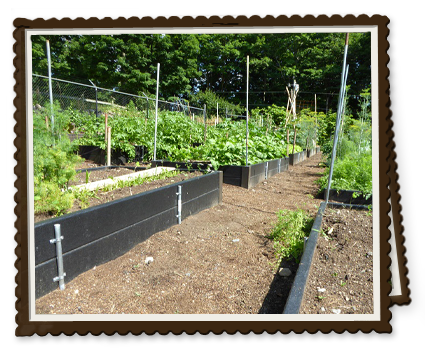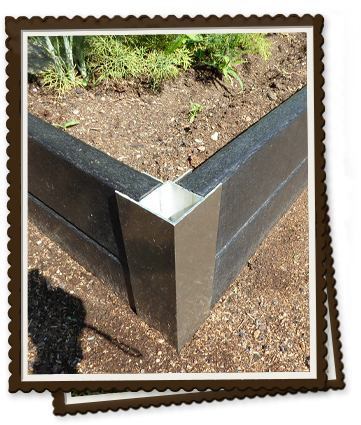
Seeds of Change
Raised Bed Gardening
So, for those of you who live on a hill side, as we do, or whose terrain is rocky or wet, or who want to make their garden easy to till or to establish on top of an existing lawn, raised bed gardening is the way to go. You can also make your raised beds high, so you do not have to bend down so far.
For our raised beds, this time (and hopefully the last time) around, we used recycled 2 x 6 plastic lumber from GrowersSupply.com, a division of Farmtek. (You can also use 6 x 6 treated garden ties if you want high sided beds, and lap the ends.) To join our plastic planks we used GardenersSupply.com “lifetime raised bed corners” which are pre-fab aluminum and come in a variety of heights from 6”- 35”. Previously we had used these corners with treated wooden 2 x 4 lumber, but over time even these will rot. Cedar lumber lasts longer, but is much more expensive. You can also purchase complete raised bed kits from Gardeners Supply, Home Depot, and a variety of other vendors.

We made our beds 4 foot x 8 foot, but you can do any length you wish. Wider than 4 foot makes them difficult to work on, whether it’s planting or picking, and narrower makes it impossible to plant more than one row of most vegetables. Gardener’s Supply has pre-fab joiners if you wish to lengthen beds by putting planks end-to-end. They also have joiners for round or unusually shaped beds. Using a cordless drill, we attached our planks to the corners with #8 or #10 one inch stainless steel hex head screws, so they would not disintegrate (you have to get a bit for your drill that fits the head of these screws to drive them.) Because plastic lumber is bendable to some degree, we reinforced the long sides with pieces of ¾ inch galvanized steel conduit, attached with conduit clips, so the sides would not bow when we filled the beds.
Finally, we lined our beds with landscape fabric to keep out weeds and contain the soil, and then filled them with a mixture of well blended ½ home-made organic compost, and ½ topsoil. To this, we added an appropriate amount of organic fertilizer. And Voila! Ready to plant!
